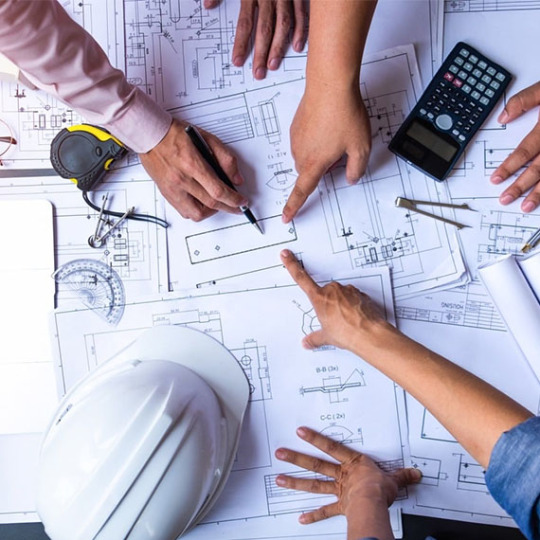#detention basin software
Explore tagged Tumblr posts
Text
How Melbourne Engineering Companies Tackle Stormwater Management Projects
Stormwater management is a critical aspect of urban planning, especially in cities like Melbourne where unpredictable rainfall and rapid urban development often intersect. Engineering companies in Melbourne play a key role in designing, implementing, and maintaining systems that minimise flooding, reduce water pollution, and improve overall water sustainability.

A Holistic Approach to Design
A reputable stormwater engineer Melbourne takes a holistic approach when managing stormwater projects. Rather than focusing solely on drainage, they assess site-specific factors such as soil permeability, catchment areas, flow rates, and long-term water usage goals. These assessments guide the design of sustainable drainage solutions, which often include:
Retention and Detention Basins: These structures store stormwater temporarily and release it gradually to reduce peak flow and prevent erosion downstream.
Rain Gardens and Bioswales: Landscaped areas that naturally filter stormwater through vegetation and soil, improving water quality and reducing pollutant loads.
Permeable Paving: Engineering teams often incorporate permeable materials in driveways, footpaths, and parking lots to allow water to soak through rather than run off.
Underground Storage Systems: Particularly useful in space-constrained areas, these systems capture stormwater below ground for later reuse or slow release.
Compliance and Sustainability
Melbourne engineering firms must also ensure that their stormwater solutions comply with local regulations such as the Victorian Planning Provisions and Melbourne Water’s stormwater management policies. In addition to meeting compliance, many firms integrate sustainable urban drainage systems (SUDS) that not only manage water flow but also contribute to local green spaces and improve biodiversity.
Collaboration and Innovation
Stormwater projects often require collaboration between civil engineers, hydrologists, landscape architects, and urban planners. With the help of modelling software and real-time monitoring technologies, Melbourne firms can now simulate storm events, predict runoff volumes, and adjust designs accordingly.
By blending smart design, regulatory understanding, and environmental awareness, engineering companies in Melbourne are effectively rising to the challenge of stormwater management—ensuring the city stays safe, functional, and future-ready.
Source: https://emsengineeringconsultancy.blogspot.com/2025/04/how-melbourne-engineering-companies.html
0 notes
Text
Mastering Civil 3D: Unveiling the Power of Engineering Design
At the heart of Civil 3D lies its ability to seamlessly integrate design and documentation processes, fostering collaboration and enhancing project efficiency. Its intuitive interface facilitates the creation of dynamic 3D models, allowing engineers to visualize and analyze their designs in real-time. From conceptual sketches to detailed construction drawings, Civil 3D streamlines the entire design workflow, enabling engineers to iterate rapidly and make informed decisions throughout the project lifecycle.
One of the key features of Civil 3D is its robust roadway design tools, Civil3D which enable engineers to design complex corridors with ease. With dynamic alignment and profile controls, engineers can efficiently layout roads, highways, and intersections while adhering to design standards and regulations. The software's intelligent grading functionality automates the creation of earthwork designs, optimizing cut and fill volumes to minimize project costs and environmental impact.
In addition to roadway design, Civil 3D offers comprehensive tools for land development and parcel layout. From site grading to utility design, engineers can seamlessly integrate various design components within a single model, ensuring spatial coordination and design integrity. The software's parcel management tools enable engineers to subdivide land parcels, calculate parcel areas, and generate legal descriptions with precision and accuracy.

Furthermore, Civil 3D facilitates the analysis and simulation of drainage systems, AutoCAD helping engineers mitigate flood risks and ensure stormwater management compliance. With its hydrology and hydraulic analysis tools, engineers can model complex drainage networks, simulate storm events, and evaluate the performance of detention basins and culverts. By integrating hydraulic analysis directly into the design process, Civil 3D empowers engineers to optimize drainage infrastructure and enhance overall project resilience.
Beyond design and analysis, Civil 3D offers robust documentation and collaboration capabilities, enabling engineers to generate construction plans, profiles, and cross-sections with unparalleled accuracy. The software's automated drafting tools streamline the production of plan sheets, annotations, and quantity takeoffs, reducing errors and increasing productivity. Moreover, Civil 3D's interoperability with other Autodesk products and industry-standard file formats facilitates seamless collaboration with stakeholders and project teams, regardless of their preferred software platform.
0 notes
Text
New Post has been published on DimRolds Review Site
New Post has been published on http://dimitrivroldan.squarebook.biz/2016/01/07/detention-basin-software-ph-6012-7102620/
detention basin software Ph 6012)-7102620
http://msmaware.com/blog/msma-drainage-design-software/ Call 6012-710-2620
The urban drainage design standard first released by the Department of Irrigation and Drainage Malaysia in 2000 is the Urban Stormwater Management Manual or the Manual Saliran Mesra Alam (or MSMA). Engineers in Malaysia are required legally to build drainage works to fullfil the requirements of MSMA. More than ten years after its first publication, DID has completely revised the first edition of MSMA (or MSMA1) with the release of the second edition (or MSMA2). Based on the case studies carried out for Kuala Lumpur, there are many alterations in the second edition including:
10 out of the fourteen rainfall stations in Kuala Lumpur have its design storm increased by up to 125%. For commercial and city area, the design flow using the Rational Method has increased by up to 130%. For a factory lot in Kuala Lumpur the Site Storage Requirement for OSD has increased by up to 235%. The volume of a detention pond has increased by up to 130%.
The changes between the first and the second editions of MSMA resulted the increase in the magnitudes of the main design parameters as follows:
135 stations in Peninsular Malaysia with longer storm data. This gives rise to in higher rainfall intensities for certain durations and Average Recurrence Intervals.
Compared to previously where it was divided into east and west coast of the Peninsula for the computation of the temporal pattern, Peninsular Malaysia is now divided into five regions. The changes in temporal patterns give rise to dissimilar hydrograph peaks and shapes.
The coefficient of runoff in the Rational Method is now established according to the types of landuse, and not influenced by storm durations and intensities, and whether a catchment is urban/rural in condition. This gives rise to changes in the estimated peak flow.
The Time-Area Method in MSMA2 is affected by the changes in the storm intensites, temporal patterns and the loss model used. The storm intensities for Kuala Lumpur have increased and the temporal pattern is more peaky, resulting in a more peaky flow hydrograph.
The Site Storage Requirement (SSR) based on the Approximate Swinburne Method in MSMA2 is higher than that using the Swinburne Method in MSMA1. The approximate method in MSMA2 has given rise to an over estimation of the Site Storage Requirements.
The volume of a detention pond has increased using MSMA2 compared to MSMA1 because of the increase in the storm intensities, temporal patterns and the choice of loss rate.
In view of the many changes in computational methods between the first and second editions of MSMA, a tool is developed to help engineers to perform the computations using both editions accurately and to allow comparison be made of their changes quickly. A stormwater design software has been designed for MSMA. The software is written by Ir. Dr. Quek Keng Hong- a professonal engineer in Malaysia. MSMAware also covers the East Malaysian state of Sarawak where more than a dozen storm stations and their temporal patterns are included into the software.
DETENTION BASIN SOFTWARE : 00:00:05 detention basin software 00:00:06 design storm software 00:00:08 design rainfall software 00:00:10 drainage design software 00:00:12 Manual Saliran Mesra Alam Malaysia
detention basin software Ph (6012)-7102620
0 notes